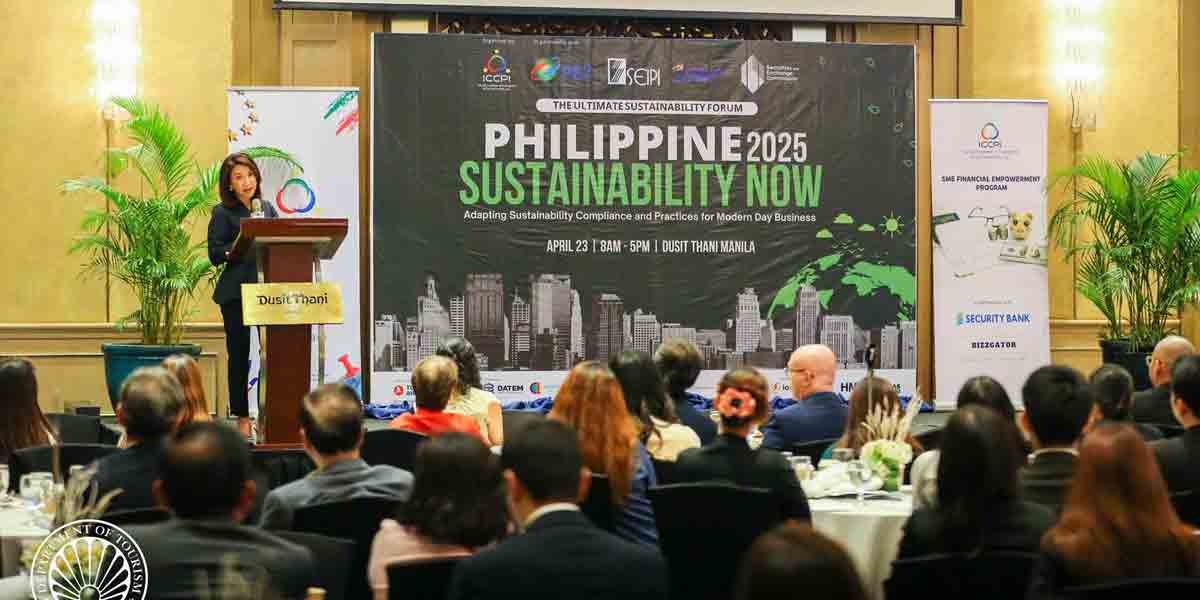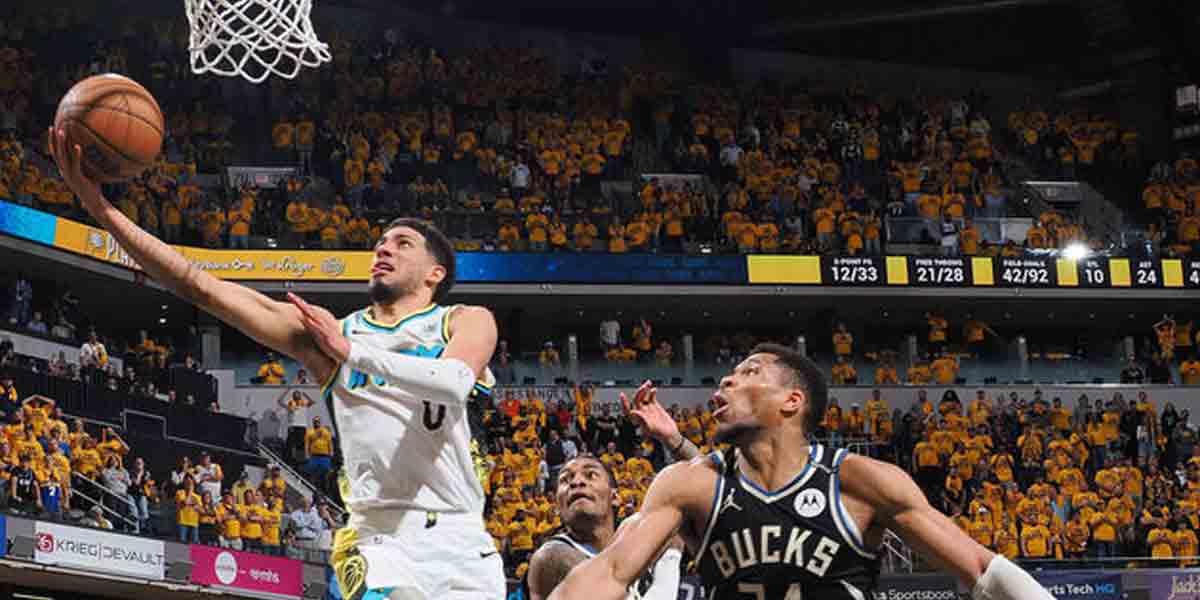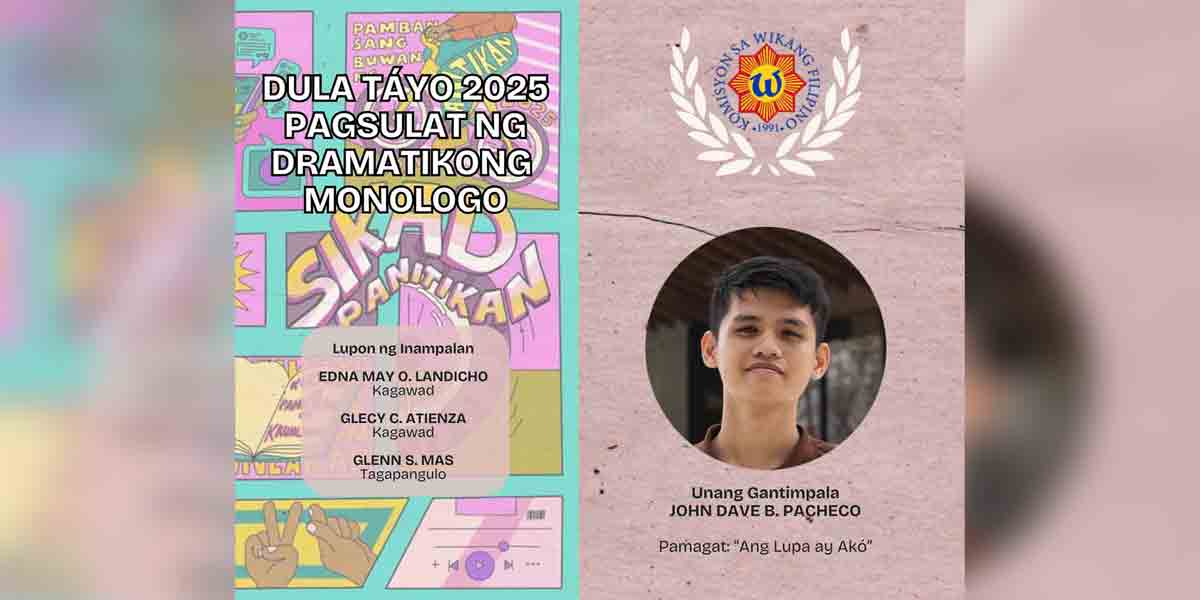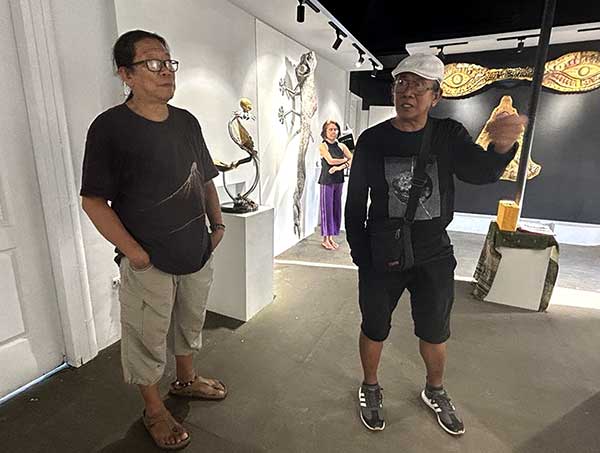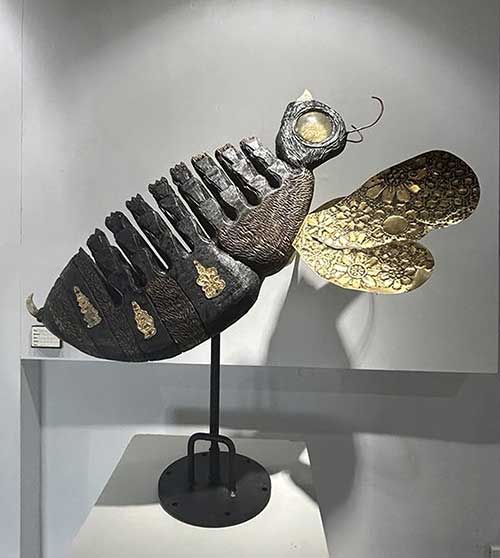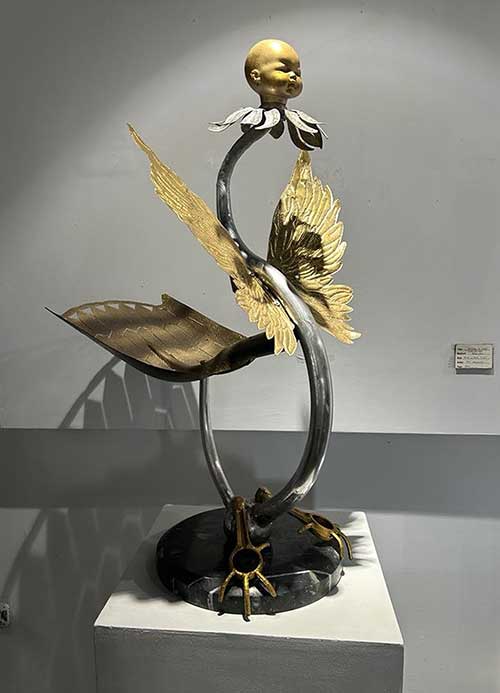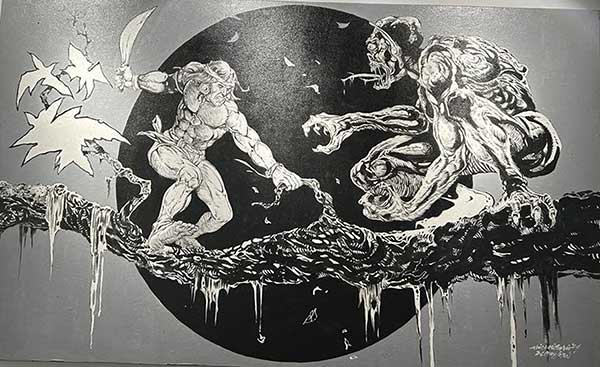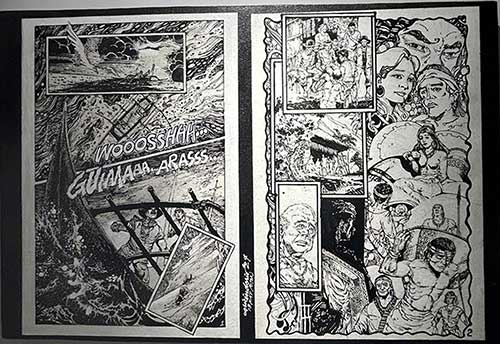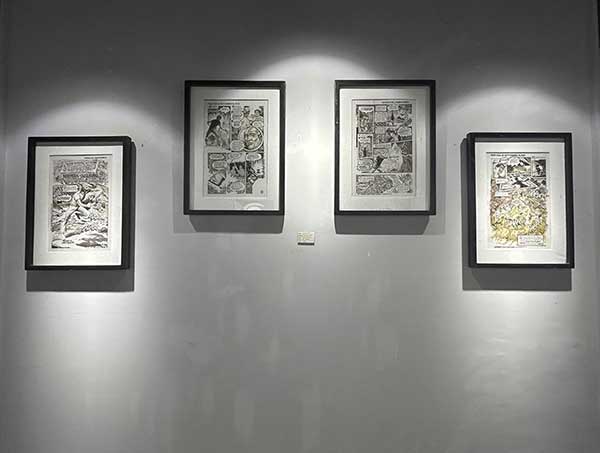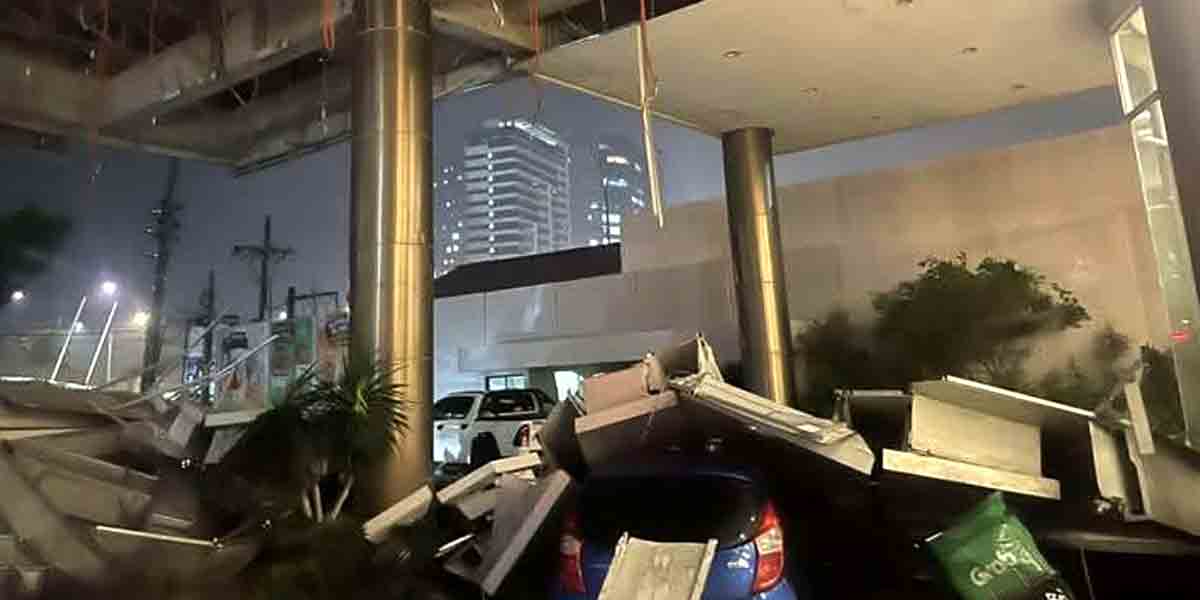By Martin Genodepa
Artists Boy Masculino (b. 1960) and Ric Isiderio (b. 1961), both from Oton were part of the early wave of art revival in Iloilo that began in the mid1970s and continued through the 1980s. Their recent two-person solo exhibition in Oval Art Gallery attests to their undiminished fervor for creating art despite the passage of time. Their exhibition collectively titled Face to Face are subtitled Ulan-Init for Masculino’s sculpture collection, and Tinta for Isiderio’s drawings and paintings.
Like many Ilonggo artists, these two artists enrolled in non-art programs after high school. Masculino studied Architecture at University of San Agustin. Isiderio finished Architectural Drafting at Iloilo School of Arts and Trades, now Iloilo Science and Technology University.
While mainly relying on their innate creativity and imagination, the professional training of Masculino and Isiderio had prepared and enriched the direction that they have individually pursued in the visual arts.
While he has proven his proficiency a painter and has successfully worked in textiles and threads, Masculino is at his best in three-dimensional artworks. This is probably an impact of his Architecture education. Masculino’s sculptures demonstrate not his only ample grasp of the technique or process of transforming materials into art pieces, they also attest to the range of his fertile imagination.
His process of upcycling scraps to create art is similar to what the late Rey Paz Contreras had done but the comparison stops there. Masculino finds excitement in converting and combining refuse – drift wood, metal junk and such things – to create sculpture that are re-creations of nature. Three recent works stood out in this exhibit.
Tuko (2024) made from a large driftwood – 76 inches long – hugging the gallery’s white wall impresses and scares at once. The affective character of this sculpture is a reminder that real house geckos are docile but can bite hard when they are troubled. By retaining most of the original parts of the driftwood, Masculino created a mutant organism that brings to mind the experiments of scientists to modify animals and plants in a bid to push the boundaries of knowledge and technology as well as their own expertise.
Another sculpture by Masculino titled Tampisaw sa Linaw (2024) made from metal scraps and throw-away rubber doll’s head resembling a swimming swan would fit well in a Tim Burton fantasy movie. The designs on the discarded spade that make up the tail, the butterfly-like brass wings with their finely embossed details, and the aluminum sepals circling the neck complete the dainty details of the swan-like figure. Unlike Tuko which can be menacing due to its sheer size, the overall grace of Tampisaw sa Linaw entices and invites scrutiny that culminates in bewilderment as Masculino’s winged creature can only figure in an incongruous dream.
A piece of acacia wood looking like a slice of watermelon – a waste product of cutting trees using a chainsaw – was harnessed to make the sculpture Dugos Ka Kabuhi (2024). The title is baffling. Is it asserting that life is the nectar itself? Or is it suggesting that something, albeit unnamed, is the nectar of life? But it is not farfetched to think that the polysemous title was not deliberate because the sculpture itself that resembles a bee is actually also a magazine or document rack. To contrive that function, Masculino’s extra-legged bee is upturned. The position is not unusual for real bees but it is not commonly perceived. This attests to the artist’s trait as a keen observer of nature. Masculino used a wild pig’s curved pointed tooth as his bee’s stinger thereby not forgetting to reinforce the thought of danger and potential pain that bees can cause. Its wings were fashioned also from sheets of brass with embossed flower designs, another clever associative feature that finely reiterates the function of real bees in the scheme of things in the environment. As final touches of details to the piece, Masculino nailed small brass appliques to deck the insect’s body. These looked in every way like ornaments on carrozas of saints in church processions. In this work alone, the convergence of factors that influence an artist in his creation are uncovered – language, nature, religion, philosophy, custom etc.
Armed with the discipline instilled by drawing exercises in drafting architectural plans, Isiderio’s involvement in the visual arts started when he drew illustrations for the local magazine Yuhum while teaching in ISAT in the 1980s. Then he moved to Manila to join the fray of artists who were into graphic novels and stories illustration in the 1990s. Isiderio’s works were included in several illustrated publications of Atlas Publishing – one of the more prolific producers of illustrated short stories and novels in Tagalog. Later he found employment in Saudi Arabia as a draftsman.
Upon returning home after several years of working abroad, Isiderio has restarted his visual art. He has joined several group exhibitions with his paintings that are a continuation of his considerable years spent in the comics industry.
In this exhibit, Isiderio seems determined to recover to his bearings as a visual artist working on the genre he is familiar with and had excelled in. As if to test if he still possessed his abilities in drawing, on a panel in his section of the gallery are pen and ink recreations of one of the illustrated short stories he was part of in the heydays of comics in the Philippines. They also serve as an introduction to Isiderio – an Ilonggo who had made a name for himself during the peak of local comics illustration.
On another panel, hangs Komiks (2024, acrylic on canvas). The work was painted to appear like pages from an illustrated stories magazine. While it shows the artist’s adept handling of the acrylic medium which he has never extensively used as an illustrator, the work also intimates the possible direction Isiderio’s visual art may move towards. Unknown to many, Isiderio did not only illustrate the stories penned by someone else; he also had created stories and illustrated them himself. Isiderio will likely be taken as a committed artist if he does not veer away from works like Komiks that highlight narrativity. True, they will surely have affinities with what Roy Lichtenstein did and yet they will altogether be unlike what Lichtenstein did. As it were, the comics-inspired art of Lichtenstein was monofocal. Isiderio, in Komiks, seems to prefer montages and bares his horror vacui aesthetics – the lasting effects of years of comics illustration and storytelling. The genre is largely unexplored and expanded as fine art. One innovation was done by Brenda Fajardo who before her popular tarot card series, handwrote, in cursive writing, several Philippine lore and legends and illustrated these in her personal style of naïve figuration.
Isiderio’s skill at design and stylized figure drawing are manifest in works without overt narratives or dialogue balloons – Hangaway, Binukot, Batalya Labaw Dunggon/Saragnayan, and Hutik – all acrylic on canvas and done this year. In these pieces, Isiderio is more restrained, filling his canvases with just enough details, sometimes irrelevant to the main subject, to create a well-balanced composition. His mastery at simulating movement which is indispensable in creating illustrations for comics magazines also comes to the fore. However, it is ironic that the absence of written narratives and speech balloons have reduced these works to mere illustrations more so when their titles are verified. No doubt, they are well-made but they tend to be decorative. Komiks that deliberately suggests a story has greater weight as fine art.
Art is about giving new dimensions or introducing new values to what is existent or what has been done. The art that these two Ogtonganons are doing may not be totally new but what Masculino has been contributing and what Isiderio is poised to contribute to their respective preferred art genres is something quite Filipino, if not exclusively very Ilonggo.
—
Oval Art Gallery, an artist-run space, located in Brgy Bita Sur, Oton was established in 2023 by the Ogtonganon Visual Arts League.







